1. A Bowl of Care and Comfort — Jeongseongsik, Anguk
As you step out of Anguk Station Exit 3 and look up, you’ll spot a modest sign with an honest name—Jeongseongsik. Located between Anguk Station and Changdeokgung Palace, this restaurant in the heart of Jongno serves carefully cooked hot pot rice (sotbap) and wild-caught eel. A single bowl here quietly shows you what it means to serve a heartfelt meal.
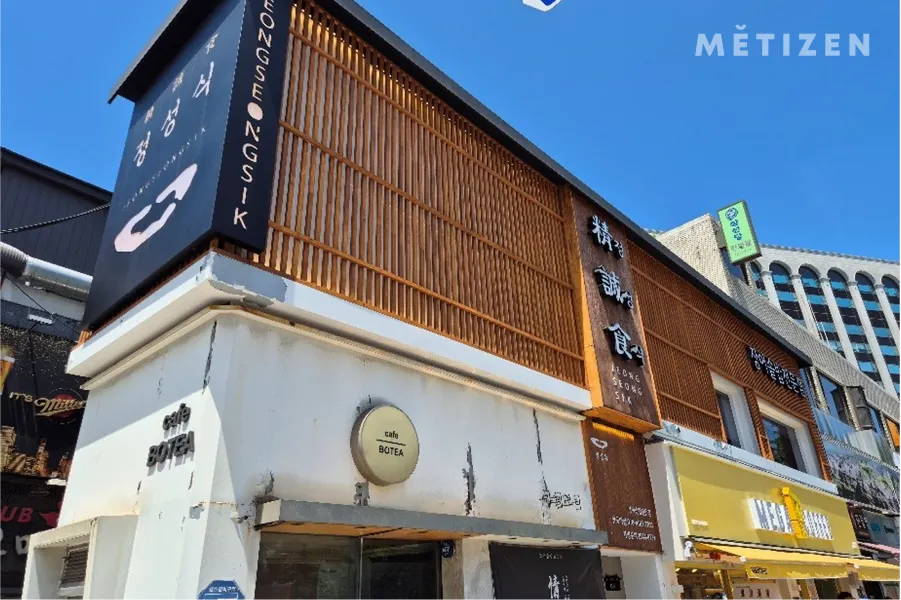
On the second floor, the restaurant resembles a small, cozy café with wooden tables, large windows, and warm lighting—designed to help you focus on your meal in peace.
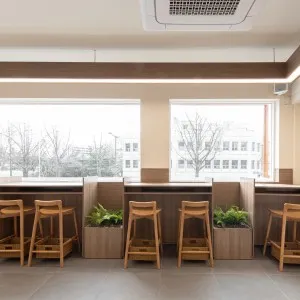
With only a few window seats and a few four-person tables, the compact layout makes it comfortable for solo diners. There might be a wait during lunch hours, but booking via CatchTable allows you to skip the line.
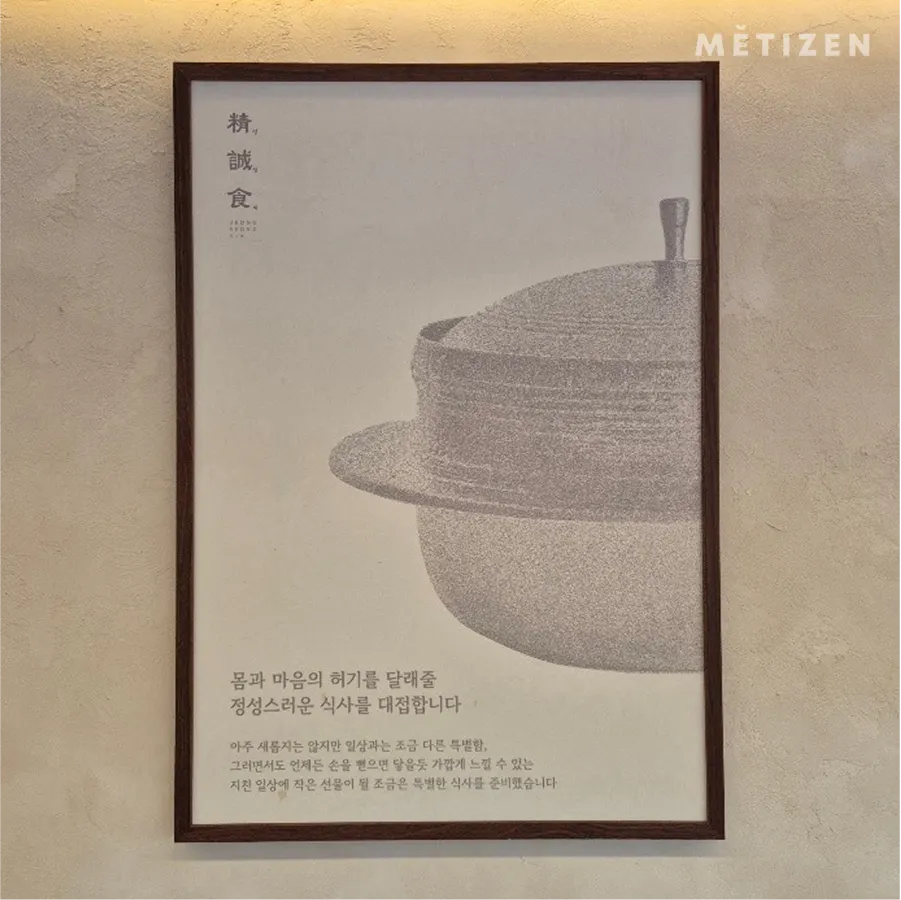
Jeongseongsik began as an eel restaurant in Hanam, Gyeonggi-do. Using techniques passed down from a fisherman father, they serve up dishes featuring wild-caught eel and freshly cooked rice. The essence of it all comes through in one signature bowl.
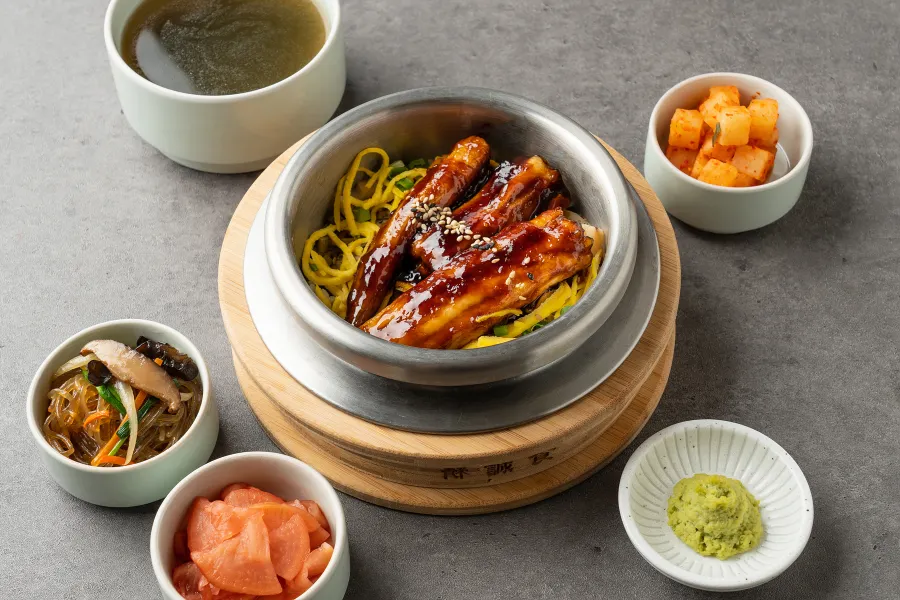
Their top dish is the eel sotbap, made with premium wild conger eel caught off Sogeum Mountain Island. After skillful preparation and grilling, the eel is seasoned with either soy sauce or gochujang-based sauce. It’s placed whole over freshly steamed rice, topped with shredded egg and scallions. Served with soup, pickled radish, and japchae, the meal reflects the spirit of a traditional Korean table.
As you dig in, you’ll find the crispy rice crust (nurungji) at the bottom—scooped up with a bit of pickled veggie, this final bite carries the rhythm the restaurant aims for.
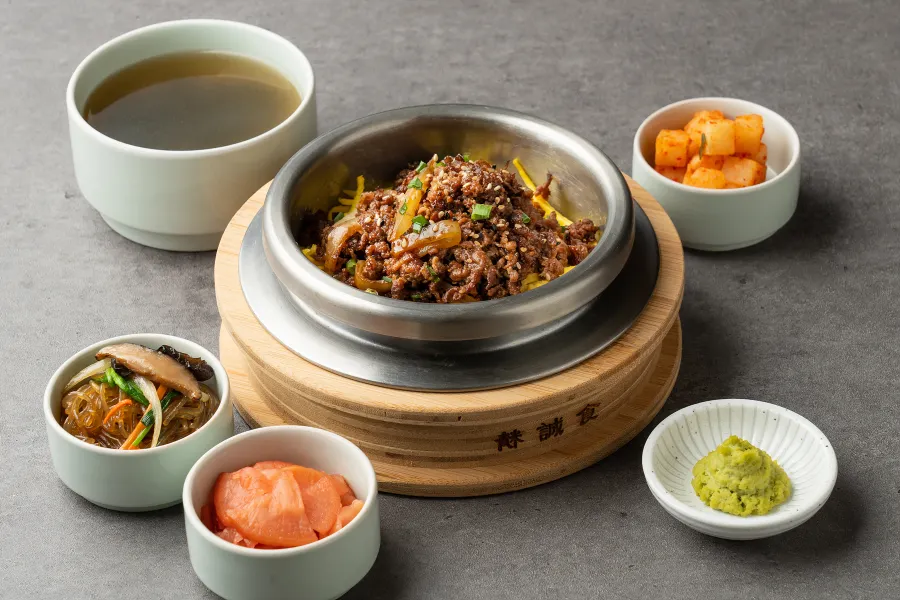
What makes this place truly special is how it reimagines hot pot rice in so many creative ways. One standout is the bulgogi rice bowl, generously topped with tender, stir-fried beef over a soft layer of egg. Another eye-catching dish is the crispy fried eel rice bowl, where thinly sliced eel is deep-fried to a golden crisp and stacked high like a mountain. The batter is light and crunchy, while the eel inside remains soft and juicy. Rather than feeling heavy, the fried eel has a rich, nutty flavor that pairs beautifully with the rice.
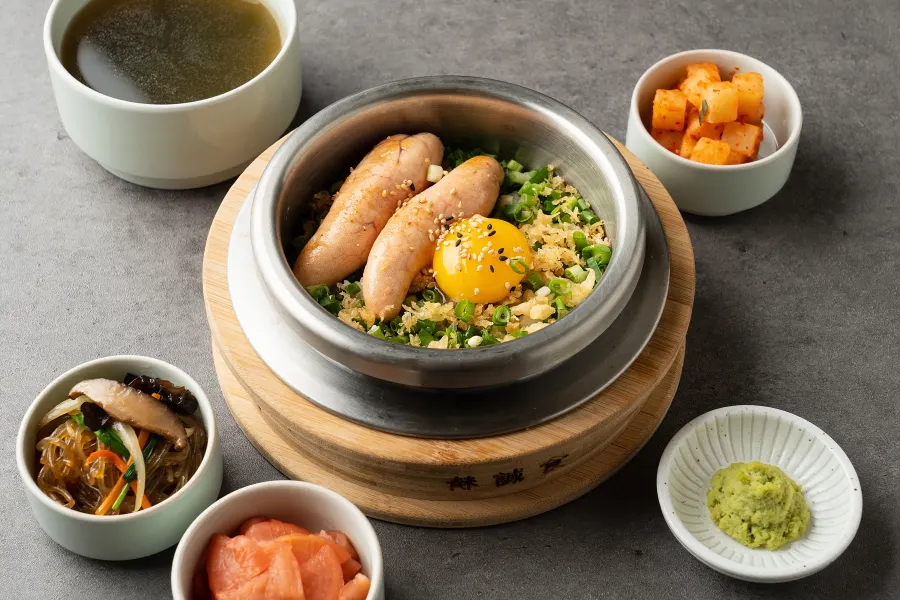
You can also choose from a wide range of other options topped with generous and flavorful ingredients—like stir-fried octopus with water parsley, creamy pollack roe, or a mix of crab meat and pollack roe. Each bowl is thoughtfully crafted with freshly steamed rice and a hearty topping that suits different tastes.
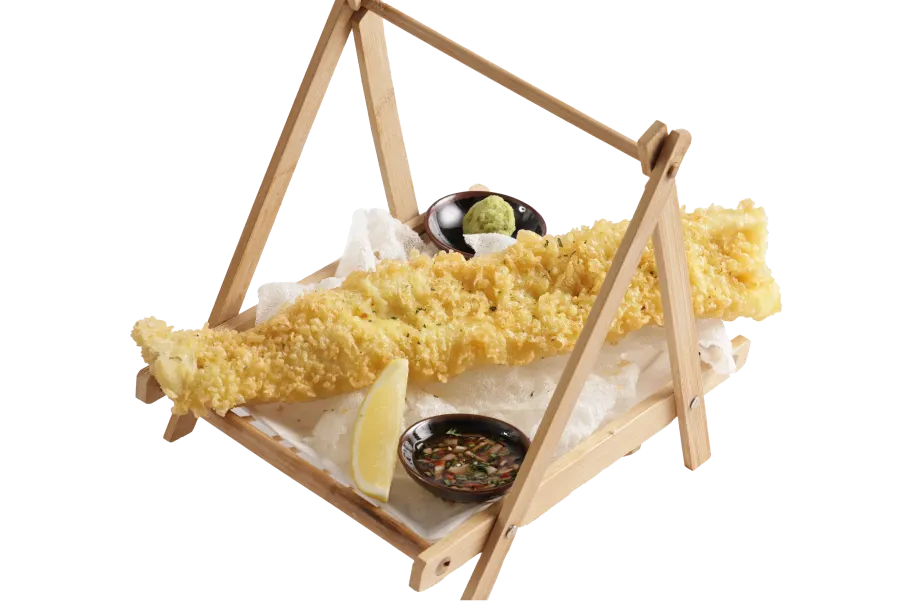
Don’t miss out on their other popular dishes, like the whole deep-fried eel and sweet soy-glazed eel bites. Crispy on the outside and tender on the inside, these dishes highlight the naturally delicate texture of conger eel in the most satisfying way.
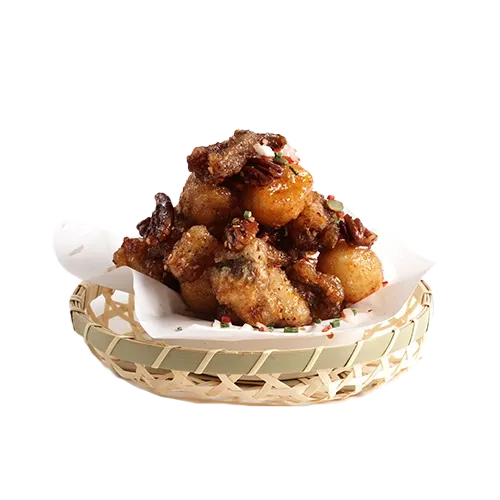
Prices are also surprisingly reasonable. The eel rice bowl starts at around 15,000 KRW, with special sizes under 20,000 KRW. Set menus for one or two make it easy to try different flavors without breaking the bank.
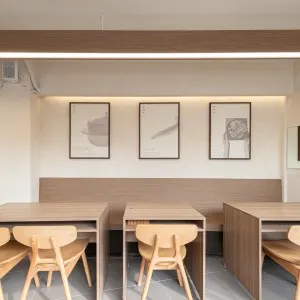
Jeongseongsik is more than just a meal—it’s a comforting pause in the heart of Jongno for locals and travelers alike. If you’re exploring Bukchon or craving a nourishing, heartwarming meal, this is the bowl to remember your day by.
2. A Tranquil Hanok Wine Bar by Gyeongbokgung – Tafelrunde Seoul
Follow the calm alleyways near Gyeongbokgung Station, and a small sign quietly draws you in. At the end of a serene lane in Seochon stands Tafelrunde, a hanok-style wine bar that combines modern refinement with heartfelt hospitality.
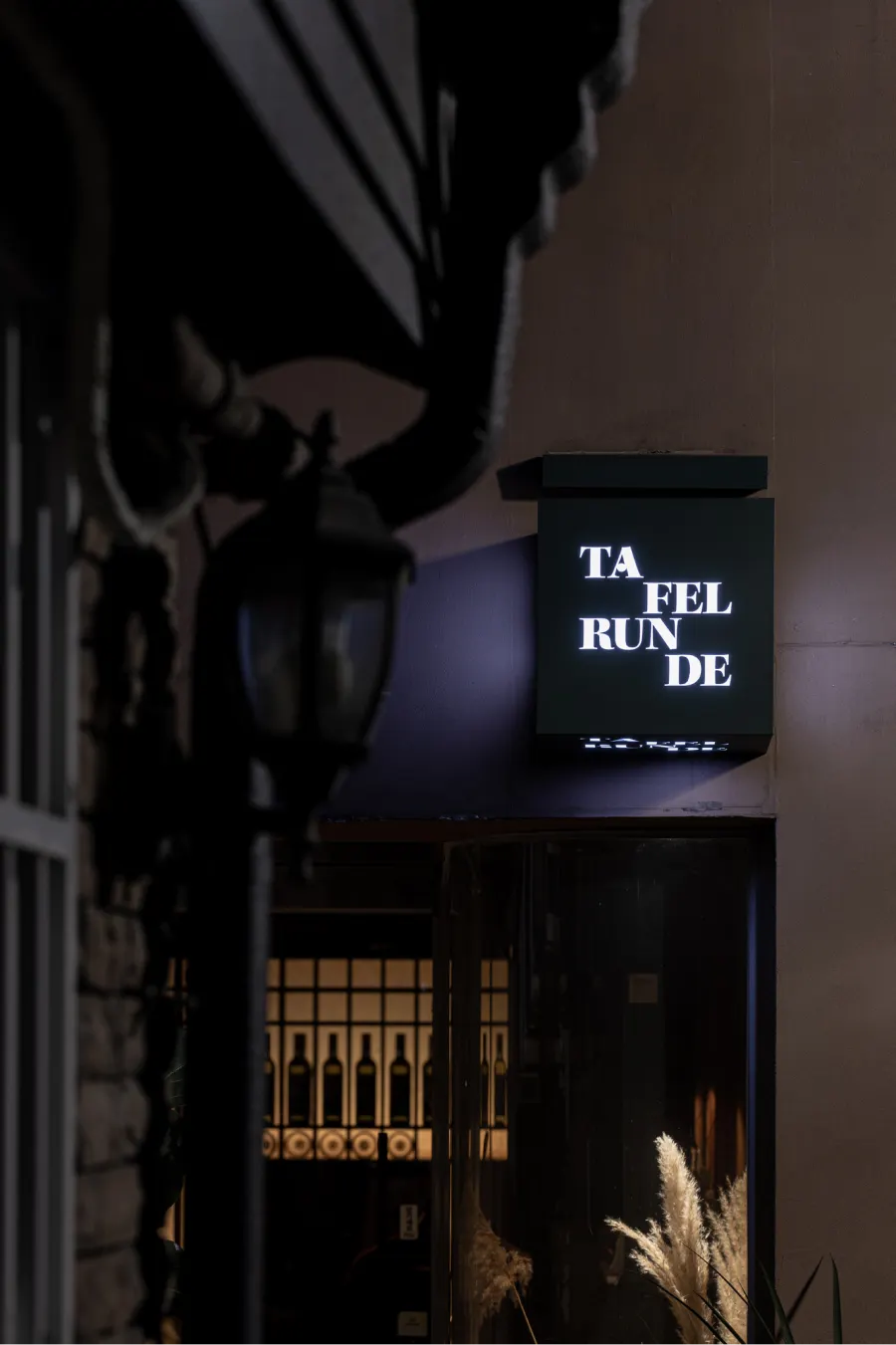
📍 108-5 Sajik-ro, Jongno-gu, Seoul
🕔 17:00 – 24:00 (Last order: 23:00)
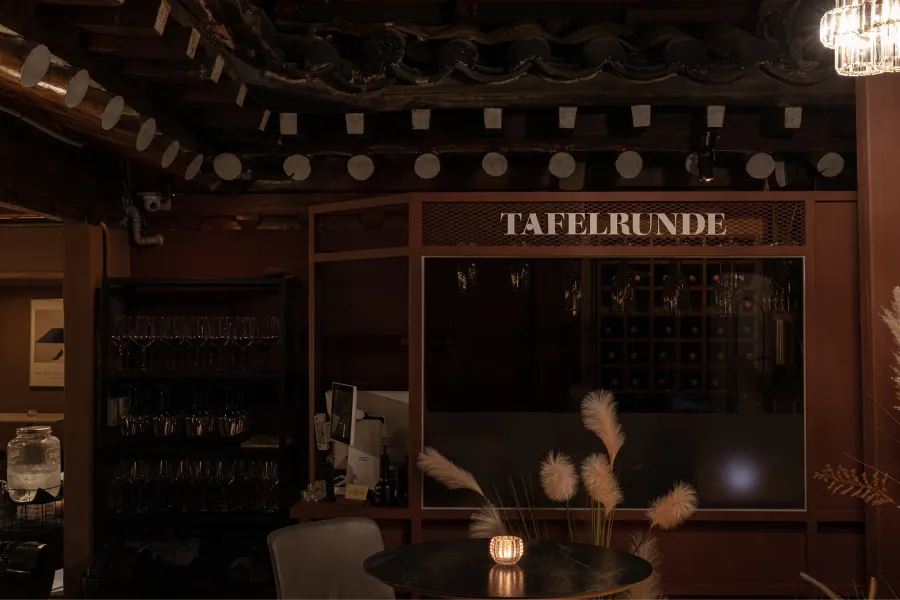
Named after the German word meaning “a gathering at the feast table,” this bar blends the clean lines of traditional hanok with modern interiors, quality wines, and elegantly plated dishes—all at accessible prices.
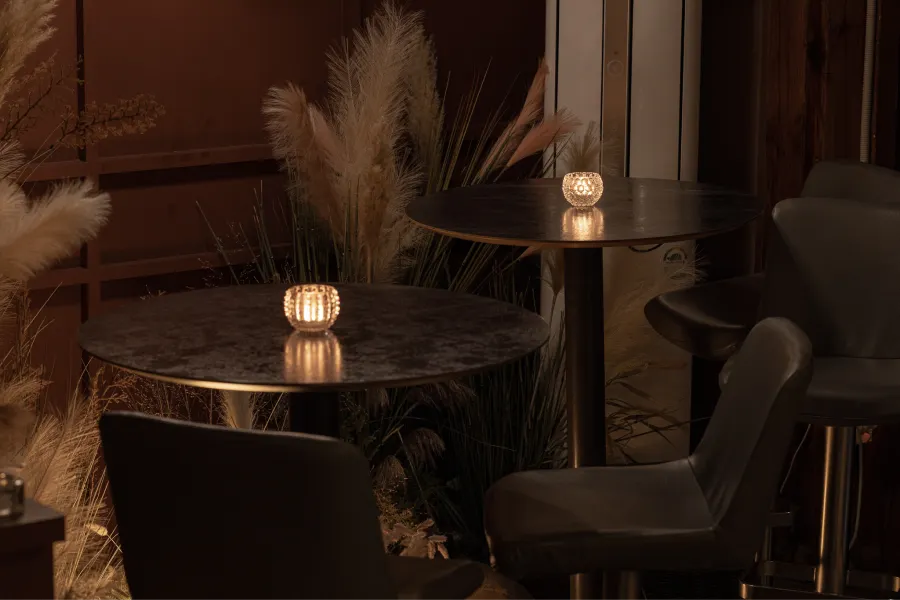
The space preserves the original hanok structure to create a quiet, intimate mood. Antique candleholders by the door, small tables in the main hall, soft lighting, and gentle music all make it feel like being invited into someone’s charming old home. If someone special comes to mind, bring them here for a romantic evening.
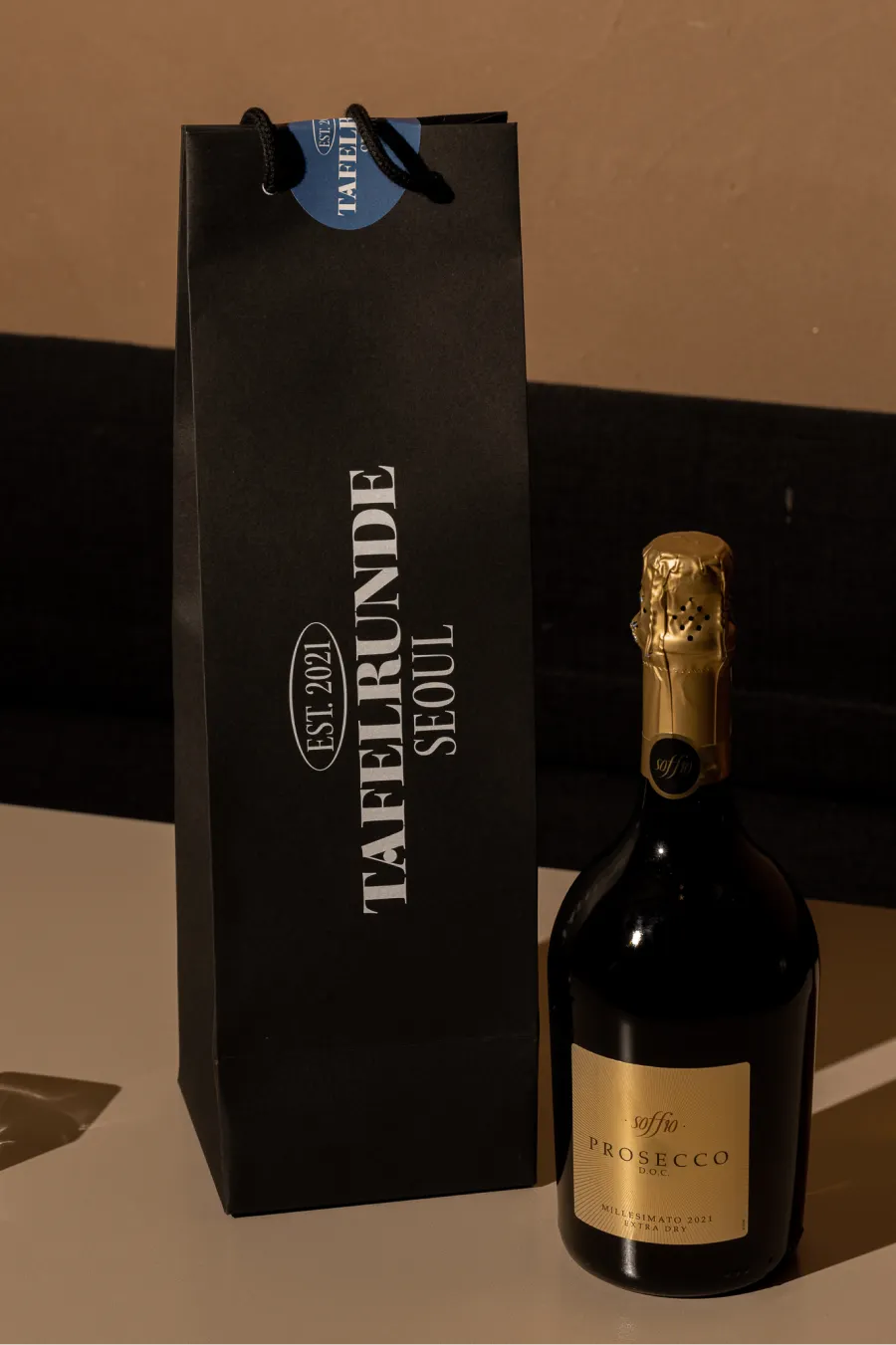
Their wine list is curated through personal tastings, featuring everything from everyday bottles to wines from renowned producers. Even beginners will feel comfortable, thanks to the approachable staff who offer thoughtful recommendations.
Tafelrunde doesn’t take wine too seriously, yet never treats it lightly either. Without lengthy explanations, they draw guests into the world of wine, letting the glass do the talking in a cozy, relaxed space.
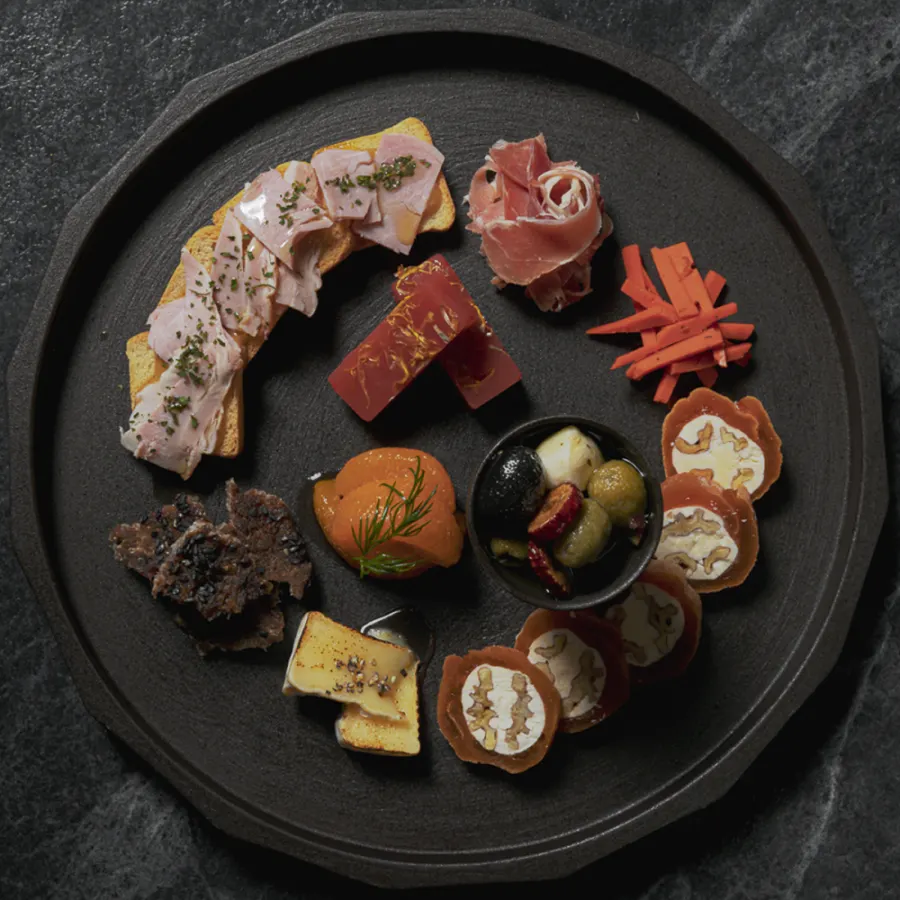
The food also shines with its creative use of Korean ingredients. The Tafelrunde Platter includes dried persimmon cheese rolls, Earl Grey jelly, homemade jerky, cheese, charcuterie, fig jam, olives, and fruit—a beautiful harmony of tradition and modernity.
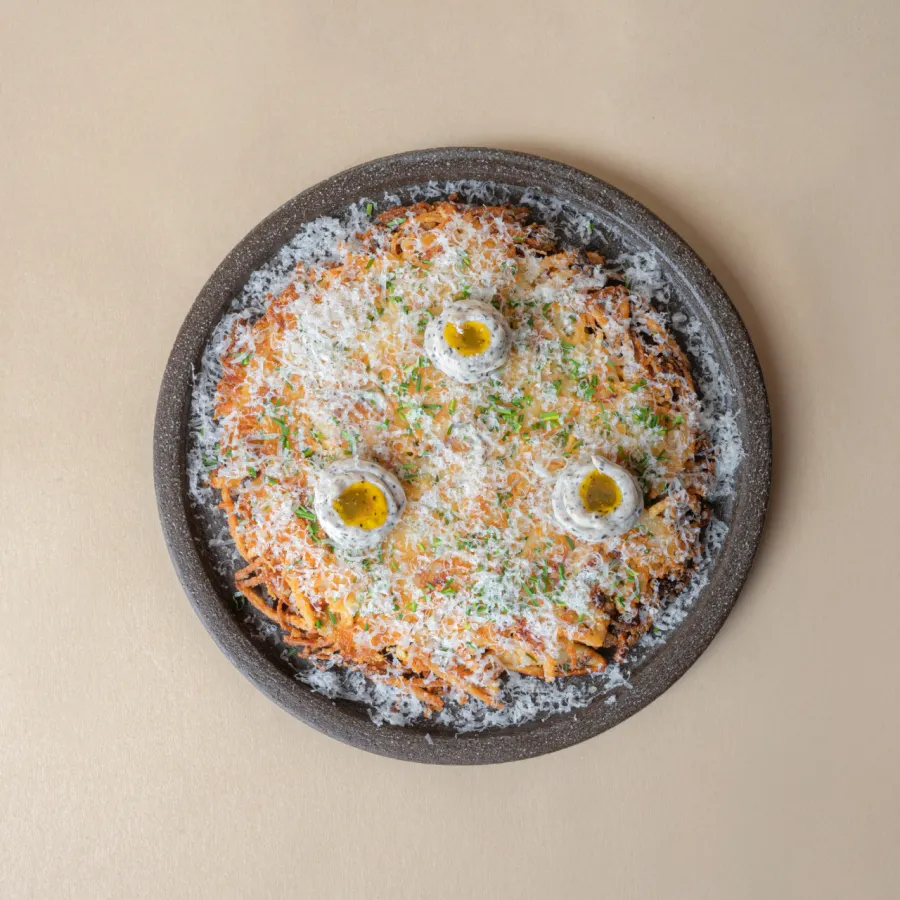
The truffle potato pancake is a favorite: crisp and golden, made with potatoes and bacon, sprinkled with cheese like snow, and dotted with truffle cream cheese. Add black truffle for an extra indulgent touch. Familiar ingredients come together in refined, unexpected ways—perfectly matched with the hanok setting.
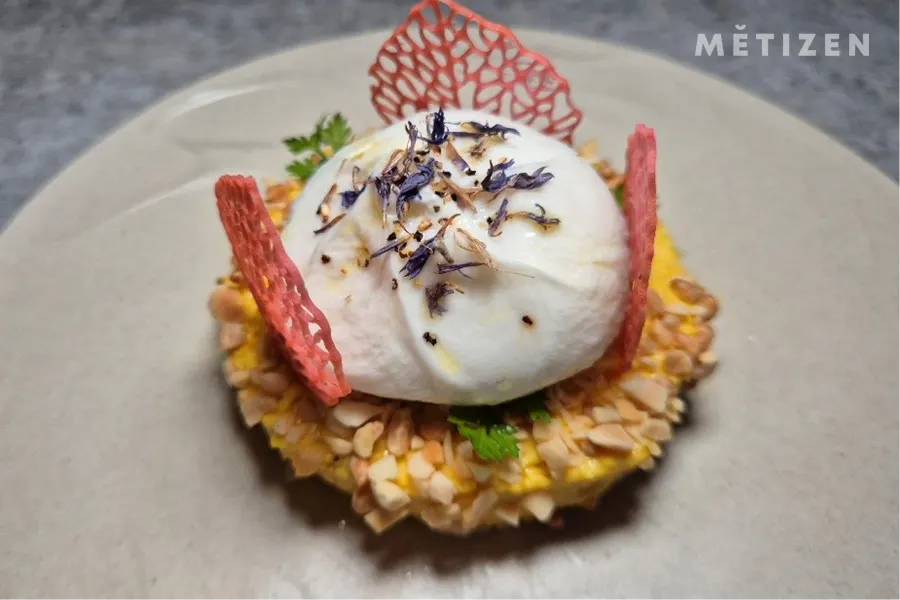
The menu impresses with a subtle blend of Western cooking techniques and Eastern sensibilities. The burrata is paired with camembert confiture and macadamia, awakening the palate with rich, nutty notes. The squid ink pasta, wrapped in seaweed and topped with sweet shrimp, is finished with a deep, velvety bisque sauce—bringing out the gentle essence of the sea.
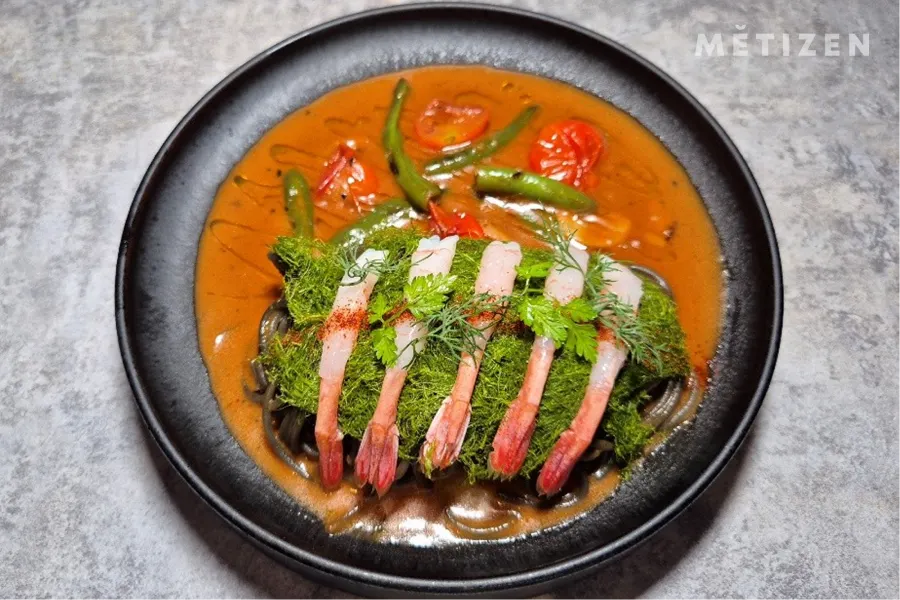
The chicken confit is cooked to juicy perfection and served with a tart omija-infused bigarade sauce, offering an unexpected but delightful balance. The slow-cooked Iberico pork shoulder steak leaves a lasting impression, complemented by savory kelp butter and fragrant Korean herb chimichurri.
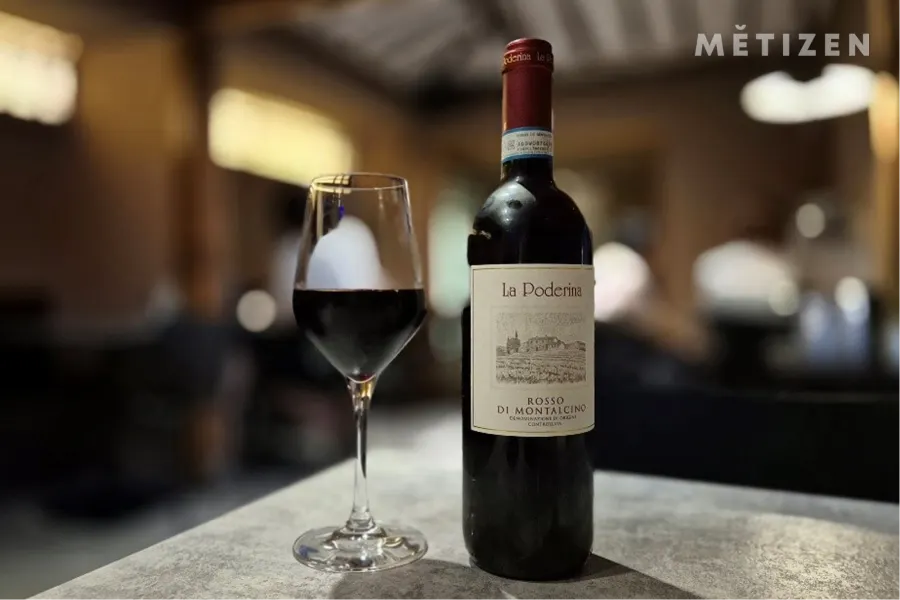
While the dishes feel refined enough for fine dining, the atmosphere is relaxed, and each plate is prepared with care and precision. Best of all, everything—from the food to the wine—is reasonably priced, making it easy to enjoy without pressure. Whether you’re sipping a glass alone or settling into a slow-paced date, this is a place that fits just right.

Though the menu has the polish of fine dining, it’s served at an accessible price. Whether you’re grabbing a solo glass or enjoying a slow-paced date, this is a place where food, wine, and setting come together with just the right balance.
3. Signature Ribs in a Lava Cave – Mongtan Jeju

📍 83 Dongbok-ro, Gujwa-eup, Jeju City
🕦 11:30 – 21:00 (Last order: 20:00)

Between Hamdeok and Gimnyeong in eastern Jeju lies a quiet path through Gujwa-eup, famous for its sweet, crunchy carrots. Here, you’ll find Mongtan Jeju, where it feels like time has rewound. Inspired by prehistoric lava caves, the grand, cavernous interior immerses you in another world.
This branch of Seoul’s famed Mongtan, known for its house-developed “wood-charcoal ribs,” brings Jeju’s freshness and volcanic energy to the table.
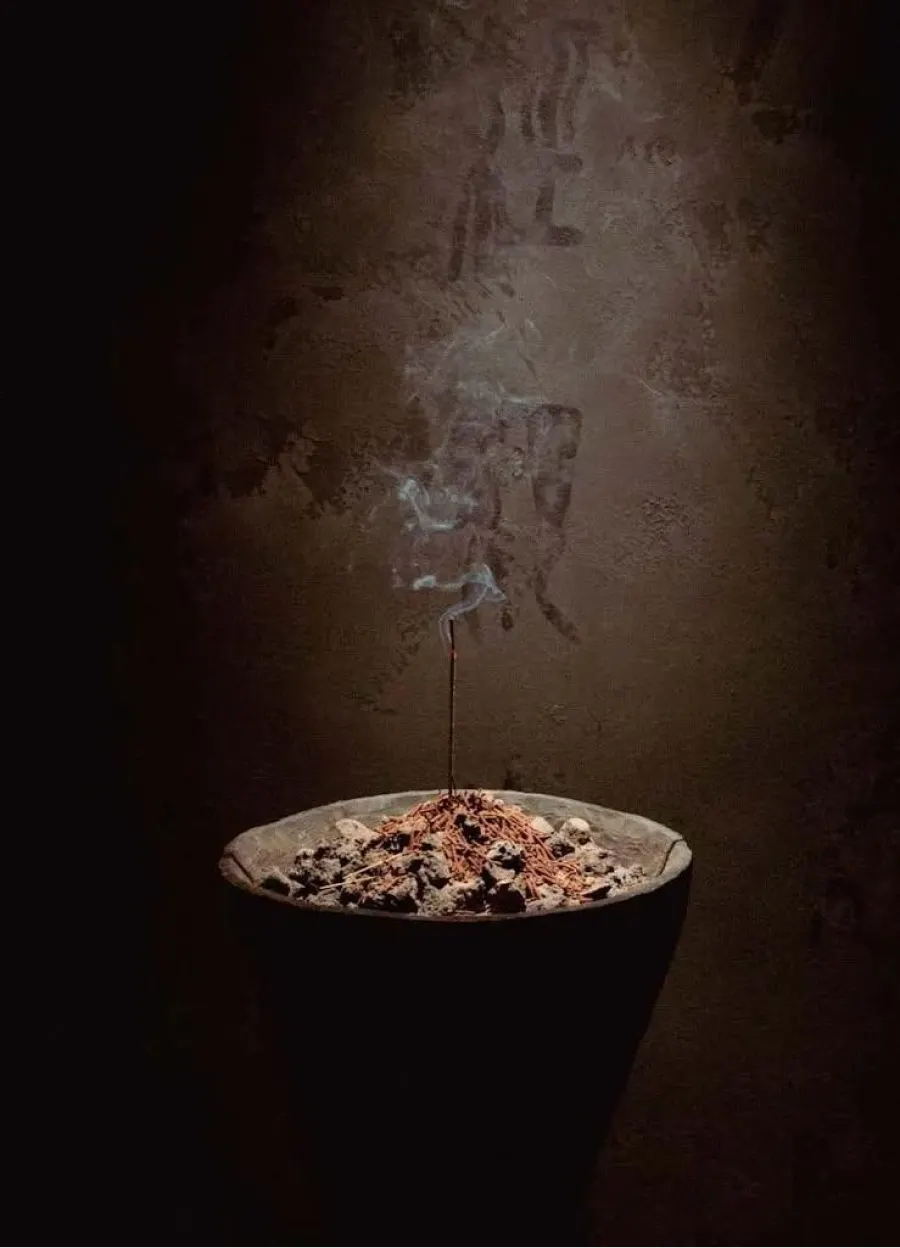
Mongtan—its name combining mong (dream) and tan (charcoal)—has brought its philosophy of straw-fire grilling, first pioneered with its signature wood-charcoal beef ribs, to Jeju’s fresh local ingredients and volcanic energy. To enjoy their iconic ribs infused with smoky straw aromas in a setting that feels like a lava cave is truly remarkable!
Adding to the experience are Jeju-exclusive dishes like hot pot rice topped with abalone and other seafood, Jeju-style aged kimchi fried rice, and Gujwa raw fish noodles—making it feel like an entirely new culinary destination.
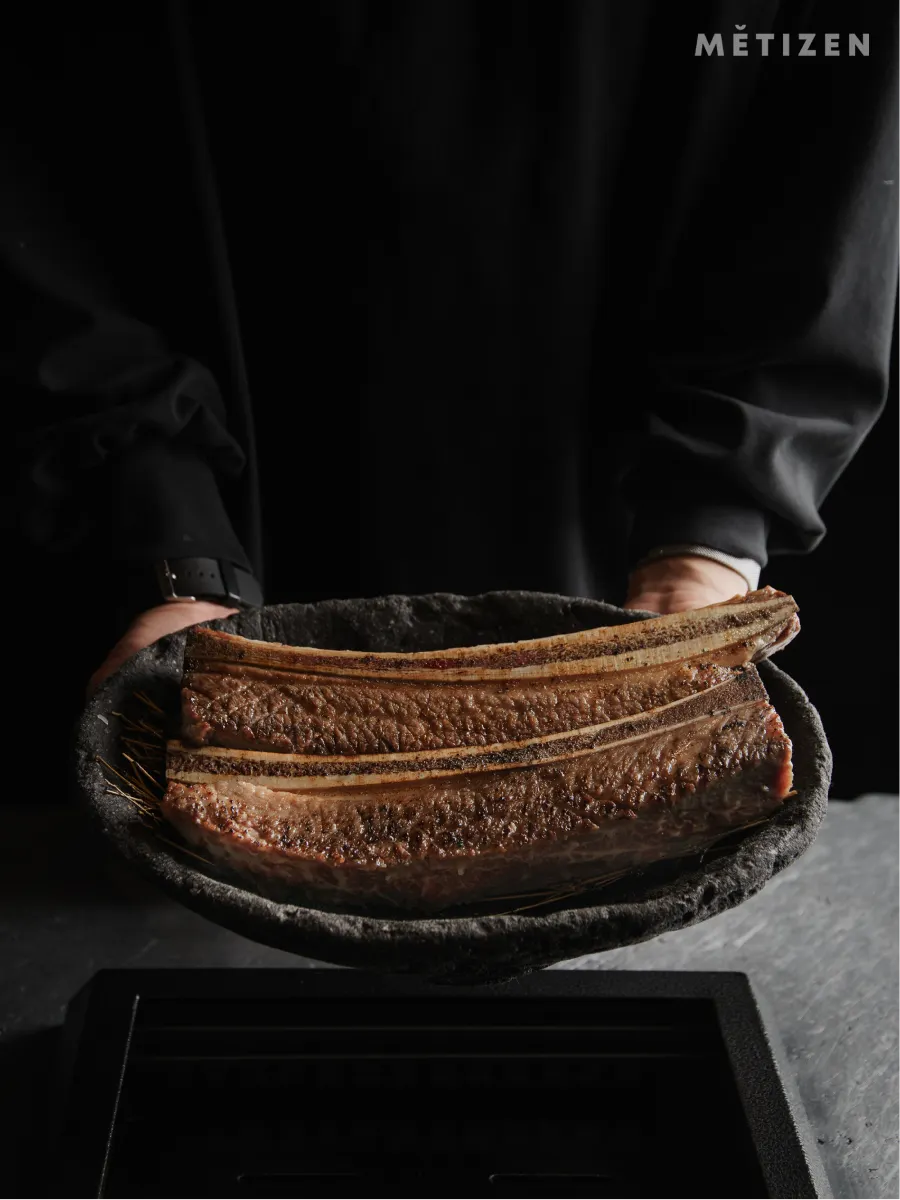
The must-try is their house-developed beef short ribs—using only prime cuts from ribs 6–8, aged in a special soy marinade, then grilled over bamboo charcoal and smoked with straw. Served with toppings like seaweed wasabi, green chili pickles, garlic vinegar, and herring roe sauce, the meat’s flavor and juices pair beautifully with each bite.
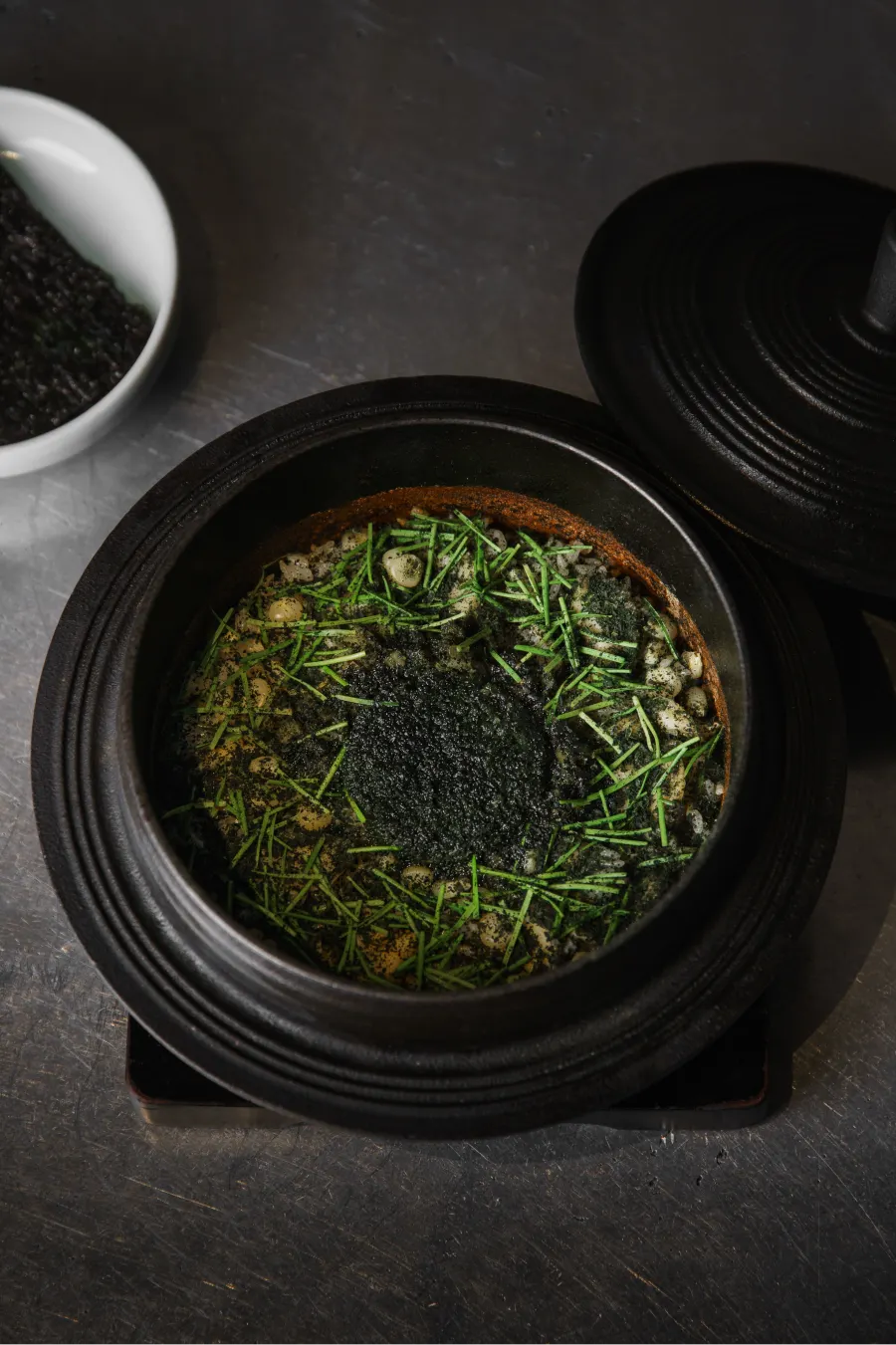
But if you’ve made it all the way to Mongtan Jeju, don’t miss the dishes that capture the true taste of the island—like the abalone hot pot rice and Jeju-style aged kimchi fried rice. The rich abalone innards sauce seeps into each fluffy grain of rice, while the tender abalone and seaweed powder evoke the deep flavors of the sea.
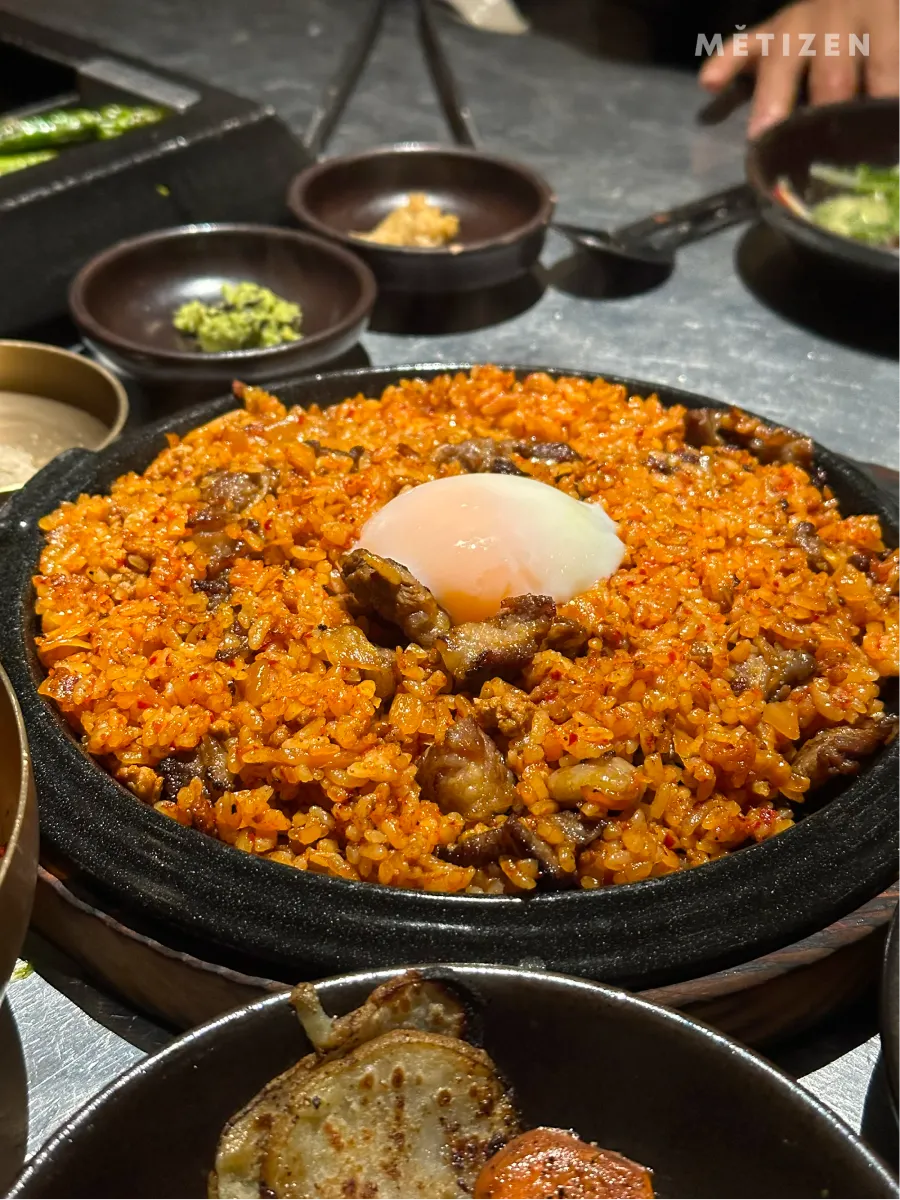
The aged kimchi fried rice, made Jeju-style and stir-fried in pork fat, delivers an intensely savory, umami-rich flavor. Pair it with the tender meat still clinging to the rib bones, and you’ll be satisfied down to the very last bite.
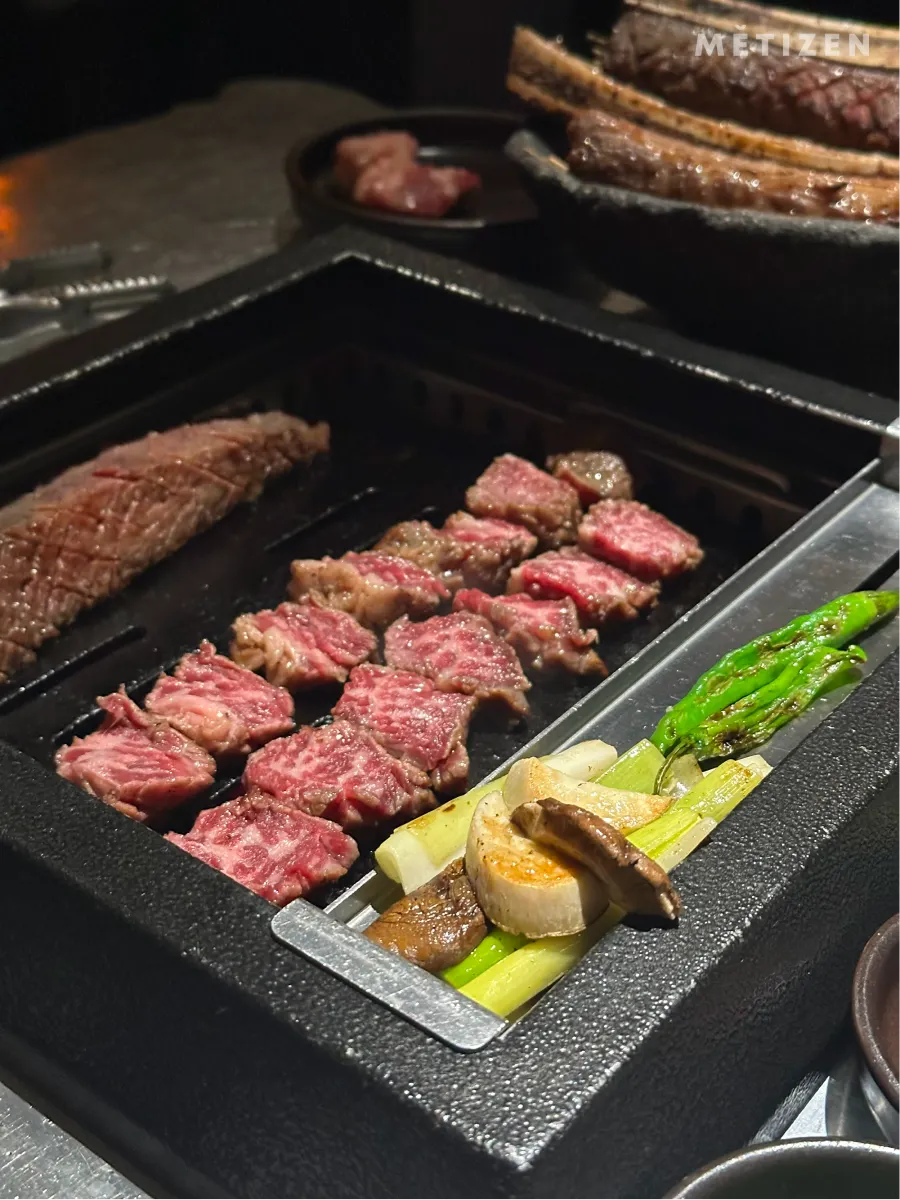
Mongtan Jeju operates by reservation via CatchTable, with slots available from two weeks in advance. Same-day waitlist entries are possible through the app or on-site from 10 AM. (Best time to try for a walk-in: between 1–3 PM.)
There’s a free parking lot just four minutes away (address: 1351-1 Dongbok-ri), ideal if you’re driving.

If you’re staying at Sono Belle Jeju, it’s the perfect opportunity to go beyond dinner and enjoy a full culinary experience. Inside this grand volcanic cave, Mongtan Jeju offers a sensory journey through the tastes and textures of the island—a must-visit restaurant to add to your Jeju travel list.
